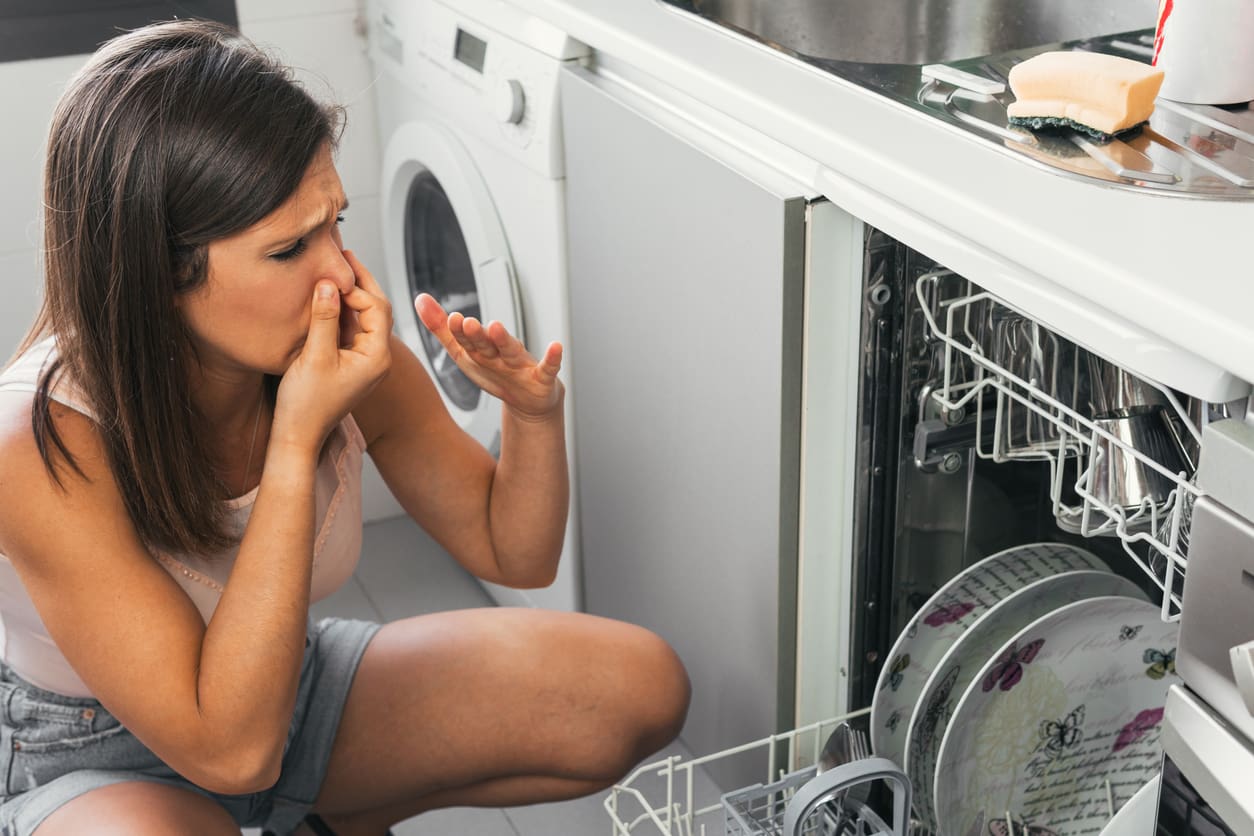
If you have a dishwasher, you know how handy it can make cleaning your kitchen daily. Dishwashers make cleaning up after every meal. The United States generates the most revenue, with Germany, France, Italy, and the United Kingdom following. The dishwashing machine global market is expected to grow by 3.69%– and keep growing at the same rate, too!
With so many dishwashers in American households, every problem that has come up has probably already arisen; and one such issue is when your dishwasher just isn’t draining. So how are you supposed to know how to make a dishwasher drain? Keep reading below to find a step-by-step solution to this common plumbing and dishwashing issue!
Step 1: Remove
The first step in solving how to make a dishwasher drain is simple: remove any obstacles that could prevent it from draining. Possible blockages can include:
- Food remnants: food remnants and particles are one of the more likely culprits, as food is what you’re trying to get rid of! Sometimes, the food from your dishes can get stuck in the crevices of your dishwasher, causing it to drain slowly or not at all. Although food should be caught by the filter built into your dishwasher, sometimes it doesn’t make it there and clogs up your drain instead. Therefore, you’ll want to occasionally check to ensure that big chunks of food aren’t stuck, preventing your dishwasher from doing its job–cleaning food off your dishes, not keeping them on!
- Dishes: another thing that may be causing slow drainage is the dishes themselves! If you overfill your dishwasher, your machine may have to work overtime or be unable to reach every dish. Dishwashers are similar to other automatic washers, like washing machines. If you add too many things to be cleaned, the machine has to work overtime to move all its parts, which can lead to the motor sputtering out and breaking! Alternatively, a smaller piece of dishware–like a lid, straw, spoon, fork, or other utensil–could be causing the drainage issue. If something blocks the drain or prevents other parts from moving, your drain is more likely to be blocked and unable to drain properly!
- Standing water: before unclogging or draining, you want to ensure there’s no standing water in your dishwasher. Use cloth or paper towels to mop and soak the excess water. It’ll be easier to see what’s happening with the drain, too, if there’s no standing water blocking your view!
Step 2: Check
The next step is to check everything! It may be most helpful to check your garbage disposal if you have one. Only about 40% of American homes have a garbage disposal, so if you don’t have one, your dishwashing may not be draining for another reason. If you have one, run it before you do anything with your dishwasher. Sometimes, debris can be stuck in your drain line, preventing not only the garbage disposal from running incorrectly or not draining but your dishwasher, too.
Another thing to check is the filter in your dishwasher. The number of times you clean your dishwasher filter changes depending on how often you run it and how you load it.
- If you wash 1-3 loads of dishes per week and:
- Wash dishes before loading,
- Scrape and rinse before loading,
- Then you should clean your filter once a year.
- If you wash 1-3 loads per week, and:
- Scrape only before loading
- Then you need to clean your filter twice a year
- Scrape only before loading
- If you wash 1-3 loads per week, and:
- Don’t scrape or wash before loading,
- Then you should clean your filter every two months.
- Don’t scrape or wash before loading,
- If you wash 4-7 loads per week, and:
- Wash dishes before loading,
- Scrape and rinse before loading,
- Then you should clean your filter once a year.
- If you wash 4-7 loads per week, and:
- Scrape only before loading
- Then you need to clean your filter twice a year
- Scrape only before loading
- If you wash 4-7 loads per week, and:
- Don’t scrape or wash before loading,
- Then you should clean your filter every month.
- Don’t scrape or wash before loading,
Step 3: Disconnect
Once you’ve cleared your garbage disposal, it’s time to disconnect the dishwasher from the power. You can do this by unplugging your dishwasher or shutting off the circuit breaker. Whichever option you choose may depend on where your dishwasher is located and what type/model of dishwasher you have.
Step 4: Clean
The next and most involved step means cleaning time! Most of the time, a dishwasher that isn’t draining just needs a good deep cleaning. While the dishwashing filter needs to be emptied and cleaned, so does the dishwasher itself. While the filter may catch most of your food remnants, others may get stuck around the edges and crevices of your dishwasher. Even the dishwashing cleaner itself can get stuck! If you use powder dishwasher detergent, sometimes the powder can get stuck in the latch and not disperse, causing unclean dishes and a clogged soap dispenser–the two things it’s meant not to do!
While you clean your dishwasher, you should also clean your drain hose. Food can also get stuck in here, too. You may have to pull your dishwasher away from the wall. Once you’ve pulled it away, though, check first that there are no kinks in the hose that are preventing water flow before unscrewing the hose. Sometimes a paper towel, utensil, or large piece of food can get stuck and cause clogs.
Step 5: Let Goodbee Be There For You
If none of these tips helped, or you’d like to prevent any further dishwashing problems, contact us today to ensure you never flounder again when trying to figure out how to make a dishwasher drain! Goodbee will make sure your plumbing needs are always met!
